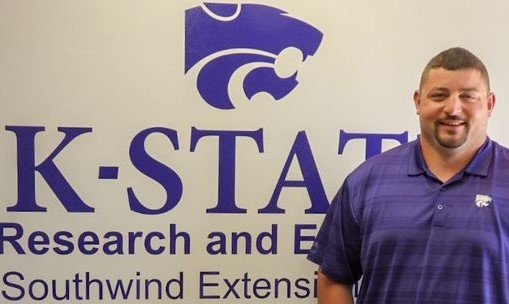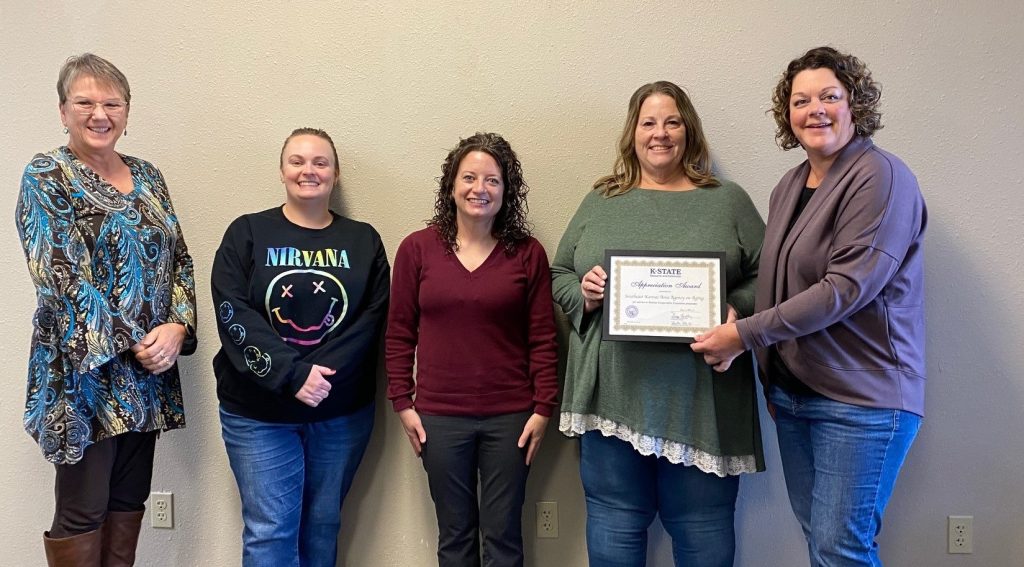
According to the most recent USDA report released on October 13, about 68% of Kansas wheat has been planted this fall, near the 5-year average of 66%. While the planted average is at or slightly above the 5-yr mean, crop emergence is at or slightly below the 5-yr mean at 36% (versus 38%).
From here until the end of the planting season, some producers may have delayed planting for different reasons, including harvesting a summer crop during October or having dry soils and waiting for precipitation before seeding. The slight delay in emergence is also likely due to dry soils. In this context, it is important to remember that even for wheat crops planted at the right time but in the absence of moisture for germination, the effective planting date is delayed since this will be when the crop actually emerges. Planting wheat in late October-early November is within the acceptable range in the southeast and far south-central Kansas. In other areas of the state, this is later than desirable and later than the cutoff date for full crop insurance benefits. Although good yields may still be reached when wheat is planted outside the optimal planting window, late-planted wheat is often subjected to colder fall temperatures. It has less time to tiller before winter dormancy, which can reduce wheat yield potential and increase the risks of winter injury. Under these circumstances, some management adjustments can be made to compensate for the consequences of late planting. These adjustments include:
Increase the seeding rate. Late-planted wheat tends to produce fewer tillers during the fall than wheat planted at the optimal time. Fall tillers are generally more productive than spring tillers, contributing more to the crop’s yield potential. Therefore, increasing seeding rates is necessary to compensate for the reduced tillering. Wheat seeding rates for Kansas vary depending on the precipitation zone and increase from west to east. Likewise, for every week planting is delayed from the end of the range of optimal planting date, seeding rates should be increased by about 150,000 – 225,000 seeds per acre (or 10 to 15 lb/acre) in western Kansas, or 225,000 – 300,000 seeds per acre (15 – 20 lb/acre) in eastern Kansas. Final seeding rate should not be above 90-100 pounds per acre in western Kansas and 120-130 pounds in eastern and central Kansas for grain-only wheat production, as extremely high seeding rates can increase the potential for lodging and increase crop water demand early in the cycle, possibly resulting in more severe drought stress later during reproductive stages (this is referred to as ‘haying off’, and happened frequently during the 2023-24 season in crops that had high fall biomass production followed by limited spring precipitation). Similarly, planting early in the growing season results in more fall wheat growth and moisture use.
To determine the row length needed for one square foot based on row spacing, divide 12 by the row spacing of your field. For example, if row spacing is 7.5 inches, 12/7.5 = 1.6 feet, or 19.2 inches of row are needed to be equivalent to one square foot.
Maintain the optimal planting depth (1 to 1.5 inches deep). Wheat needs at least 4 to 5 leaves and 1 to 2 tillers before winter dormancy for maximum cold tolerance. Late-planted wheat will most likely have fewer tillers and leaves than wheat planted at the optimal timing and, therefore, will be more susceptible to winter kill. It is important to plant wheat at the normal planting depth (1 to 1.5 inches below the soil surface) to ensure good root development and anchorage and crown insulation by the soil during the winter, increasing the chances of winter survival. Shallow-planted wheat is at greater risk of winter injury. If the seed is placed too deeply, it may not have enough vigor in cold soils to emerge well.
Place starter phosphorus (P) fertilizer with the seed. Phosphate-based starter fertilizer promotes early-season wheat growth and tillering, which can help compensate for the delayed sowing date. Additionally, P is less available under colder soil temperatures, which can result in P deficiency under cold weather conditions. When planting late, producers should strongly consider using about 20-30 lbs/acre of P fertilizer (11-52-0 or 18-46-0) directly with the seed, regardless of soil P levels. This placement method is more effective than other application methods at that time of year. The later the planting date, the slower fall root development is. The closer the fertilizer is to the seed, the sooner the plant roots reach it. The four situations when in-furrow P is considered “money in the bank” are (i) late-planted wheat crops, (ii) wheat crops planted for grazing, (iii) wheat planted in acidic soils, and (iv) soils deficient in P.
Use fungicide seed treatment or plant certified seed. Late-planted wheat is sown into colder soils, generally increasing the time needed for germination and emergence. Consequently, there is increased potential for seed and soil-borne diseases that affect seedlings and early-season wheat development. Fungicide seed treatment can protect the seed and seedlings during the extended time they are subjected to potential seedling diseases, improving stand establishment under poor growing conditions. It is important that the seed treatment thoroughly coats the seeds to ensure good protection. For fungicide seed treatment options, please refer to the most current version of the K-State fungicide seed treatment chart available at: https://www.bookstore.ksre.ksu.edu/pubs/MF2955.pdf
Variety selection. It is probably too late to change which wheat variety to plant this fall. However, a few points to consider when it is known that wheat will be planted late (e.g. when planning to sow wheat following soybeans) are tillering ability and maturity. A variety with good tillering ability may offset some of the consequences of late planting, as it might still produce one or two tillers during the fall, whereas a low-tillering variety may produce none. Some varieties are known for not tillering well in the spring and requiring good fall tiller production (for example, the variety Everest). Avoid planting these varieties in fields that will be planted late. Also, late-planted wheat typically needs to catch up in development going into the winter, which might translate into slower development in the spring. This delay can result in plants being exposed to moisture stress, especially heat stress, during grain filling, reducing the duration of the grain filling period. Thus, selecting an early-maturity variety with good yield potential may offset, to some extent, the consequences of late planting by decreasing the chances of a grain-filling period subjected to warmer temperatures. Many K-State wheat variety trials are planted late after a previous soybean crop in eastern KS. A good way to select a variety to perform under these conditions is to filter through the results of these variety trials and select varieties performing well in your region when planted late.
Lonnie Mengarelli is a K-State Research and Extension Agriculture agent assigned to Southwind District. He may be reached at [email protected] or 620-223-3720
K-State Research and Extension is an equal opportunity provider and employer.
Romulo Lollato, Wheat and Forages Specialist
[email protected]
John Holman, Cropping Systems Agronomist – Garden City
[email protected]
Lucas Haag, Area Agronomist – Colby
[email protected]








